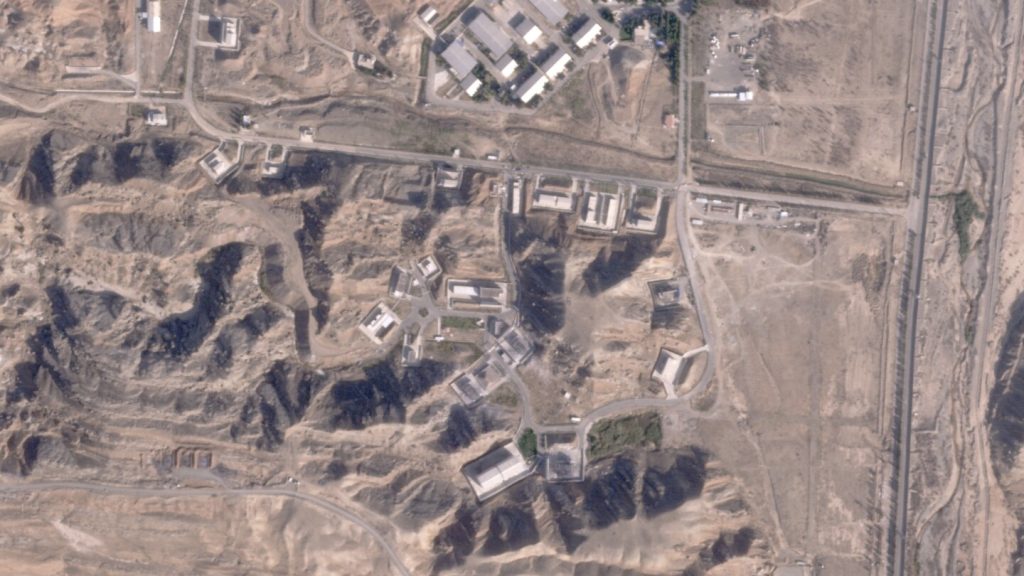An Israeli attack on Iran damaged facilities at a secretive military base southeast of the Iranian capital, as satellite photos analyzed by The Associated Press show. Some of the damaged buildings were located in Iran’s Parchin military base, suspected of conducting tests of high explosives linked to Tehran’s onetime nuclear weapons program. Another base affected by the attack was the Khojir military base, believed to hide an underground tunnel system and missile production sites. Iran’s military has not officially acknowledged the damage, but announced the deaths of four Iranian soldiers and a civilian in the assault.
Iranian officials have identified affected areas in three provinces: Ilam, Khuzestan, and Tehran. Satellite images revealed burned fields near Iran’s Tange Bijar natural gas production site in Ilam province, but it is unclear if the damage was related to the attack. The most significant damage was seen in Parchin, with one structure completely destroyed and others damaged. At Khojir, damage was visible on at least two structures. Analysts identified the destroyed buildings as potentially housing equipment related to Iran’s nuclear weapons program and ballistic missile production.
The attack did not target Iran’s nuclear facilities, oil industry, or nuclear enrichment sites but focused on facilities involved in Iran’s ballistic missile program. Buildings destroyed at Khojir and Parchin likely included sites where Iran produced solid fuel for its ballistic missile arsenal. The Israeli military claimed they targeted missile manufacturing facilities that produced missiles fired at Israel in the past year. Iranian officials, including the paramilitary Revolutionary Guard overseeing the missile program, have remained silent since the attack. The destruction of these sites could disrupt Iran’s ability to manufacture new ballistic missiles.
Despite the damage caused by the attack, the Director General of the International Atomic Energy Agency confirmed that Iran’s nuclear facilities were not impacted. Inspectors continue their work safely, urging prudence and restraint to avoid jeopardizing the safety and security of nuclear and radioactive materials. The Israeli attack was described by Israeli Prime Minister Benjamin Netanyahu as achieving all its goals and severely harming Iran. Iranian Supreme Leader Ayatollah Ali Khamenei called the attack neither exaggerated nor downplayed, ruling out an immediate retaliatory strike.
While the full extent of the Israeli attack on Iran remains unclear, satellite images and analyst reports have shed light on the targeted bases and the potential equipment housed within them. It is crucial to monitor the situation closely as tensions between Israel and Iran escalate following the attack. The international community, including the United Nations, has urged calm and restraint to prevent further escalation and maintain stability in the region. Iran continues to maintain that its nuclear program is peaceful, while Western intelligence agencies and the IAEA suspect Tehran of having had an active weapons program in the past.


